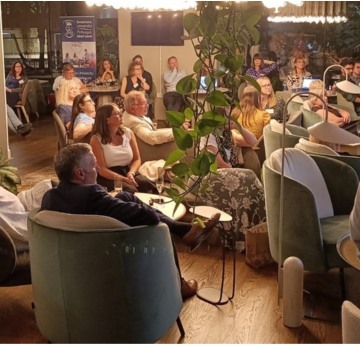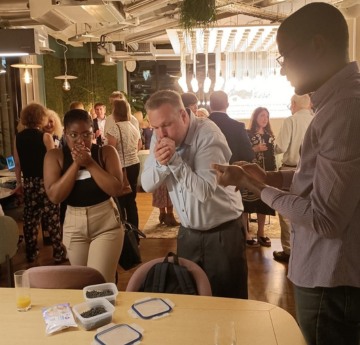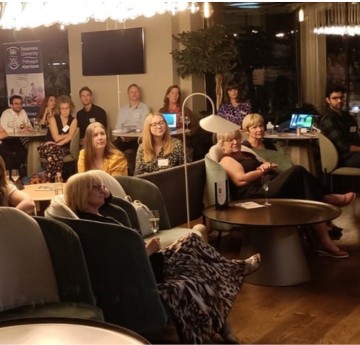Back in September we took some of our academic researchers up to London for our alumni social event. We named the event “There is something in the seaweed”. Our researchers talked about turtle conservation; how they are using micro-algaes for carbon capture; and how they are using alginates in the process for heat capture and storage. It was a fascinating evening that also provided a great opportunity for networking with alumni based in London.



Swansea University Research Showcase: There's Something in the Seaweed, with Drinks and Nibbles in Central London!
From transforming the lives of those affected by scarring, to capturing carbon, to creating versatile heat storing beads for sustainable and affordable energy resources, read more about our fantastic speakers below.
Speakers
Dr Emily Preedy, RICE Project Research Officer
Magical Microalgae and future forests - microalgae is the baby cousin of seaweed yet, holds all the same fantastic properties of Macro scale algae but can be grown in a controlled environment. It grows just like a plant but in a liquid environment, meaning that it uses sunlight and Carbon Dioxide in a chemical reaction called Photosynthesis. The RICE project has harnessed this natural phenomenon and teamed up with local industry, Vale Europe Ltd, Clydach, to reduce their Carbon footprint and recycle their wastewater. In this way, a forest has been built holding 15,000L of biomass that can be utilised in a number of applications, from pharmaceutical products to animal feeds that also reduce cattle's production of methane (another harmful greenhouse gas), promoting a circular economy.
Dr Jon Elvins, Senior Technology Transfer Fellow at SPECIFIC IKC.
We are utilising Alginate, a derivative of seaweed, as a binding agent within beads which are able to capture, store and release heat. The end goal of the project is to be able to harvest heat from industrial waste heat sources, transport it to a second location, and then use it for space heating. This ‘free energy’ will be used to offset fossil fuel usage, consequently reducing the carbon footprint. In this talk we will discuss how the beads work, some examples of them under experimentation and what the potential for the technology is.
Octavian Parkes, Research Programme Manager for the Scar Free Foundation and Swansea University Programme of Research in Reconstructive and Regenerative Medicine.
Surgery to correct facial defects often uses cartilage taken from elsewhere on the patient’s body, but this has complications. The surgeon needs advanced technical skills to make best use of the limited amount of available cartilage, and its removal can cause pain, scarring and longer-term problems for the patient. The 3D Bioface project, led by Professor Iain Whitaker, is researching the development of a novel, natural ‘bioink’ that supports human cells. The aim is to use this bioink to 3D print personalised replacement cartilage that exactly matches a patient’s facial defect, eliminating most surgical complications.
Dr Nicole Esteban, Associate Professor in Marine Biology
Our marine environment is changing rapidly due to human activity and climate change. Until recently, our ability to understand impacts on biodiversity and species was hindered by technology, but animal tracking has now become incredibly sophisticated, revealing characteristics and behaviours in animals and their habitats. To understand more about the conservation pinpoints for sea turtles, satellite tags have helped track movements from their nesting beaches since the early 1980s. So how can animal tracking help protect marine species? Nicole will highlight how animal tracking data can be used to increase our understanding of fine- and large-scale movements, learn about associated habitats and inform marine conservation management and policy.
